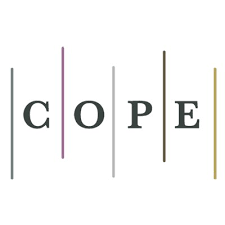The Effectiveness of Private-Public Partnerships in Land Delivery for Low-Income Housing Development for the City of Windhoek Namibia
DOI:
https://doi.org/10.52547/ijimes.2.1.1DOR:
https://dorl.net/dor/20.1001.1.27832678.2022.2.1.1.8Keywords:
Public Private Partnership, Land Delivery, Low-Income Housing InitiativesAbstract
Purpose: This study sought to assess the effectiveness of the City of Windhoek Public Private Partnership model for land delivery and low-income housing initiatives. To gain in-depth knowledge and understanding of the topic, the research adopted a mixed method approach.
Methodology: A sample size of 80 respondents was statically determined and randomly selected from a target population of 120 employees and beneficiaries of PPPs using probability sampling.
Findings: The study findings revealed that the City of Windhoek’s PPPs model and housing initiatives for low-income earners fell-short in meeting its objectives against the ever widening housing shortage, notably due to bureaucratic statutory approval processes, a lack and high cost of serviced land as well as high material costs.
To date, only a handful of those from the grassroots have benefited. The drawn conclusions were that, although the Triple-P model and housing initiatives was adopted to bridge the ever-widening gap of housing shortage, the houses being built are not affordable to low-income earners. Henceforth, the study recommends that government should provide extended support to the grassroots groups, case in point through subsidized grants or arranged part-payments at financial institutions whereby government could cover part of home-loan costs. Finally, effective program execution, monitoring, feedback and evaluation of the project milestones should be enhanced.
Originality/Value: In this study we attempted to the effectiveness of private-public partnerships in land delivery for low-Income housing development for the city of Windhoek Namibia.
Downloads
References
Namibia Labour Force Survey. (2018). Report . Windhoek: Namibian Statistics Agency.
Karuaihe, S. T. (2019, September 17). Namibia’s urban poor are stuck in limbo, without land or services. Pretoria, Gauteng, South Africa.
Mwilima, N., Fillipus, H., & Fleermuys, F. (2011). Evaluating the Namibian housing market: opportunities and constraints. Housing in Namibia: Has the situation changed, 21.
Nahr, J. G., Nozari, H., & Sadeghi, M. E. (2021). Green supply chain based on artificial intelligence of things (AIoT). International Journal of Innovation in Management, Economics and Social Sciences, 1(2), 56-63. https://doi.org/10.52547/ijimes.1.2.56
Ahmed, Y., Sipan, I. A., & Hashim, H. B. (2020). Public private partnership strategy for housing provision in Nigeria. International journal of scientific and technology research, 9(1), 2277-8616.
Kajimo, S. K., & Opawole, A. (2018, August 6-7). Exploring public-private partnership as an alternative housing delivery model in Namibia. Conference: Sustainable Construction, Transformation and Development, Emerging Opportunities and Challenges, Conference Proceedings of the 12th Built Environment Conference Procrrdings of the 12th Built Environment Conference, (pp. 388-401). Durban, South Africa. Retrieved from https://www.researchgate.net/publication/330881152
Nozari, H., Szmelter-Jarosz, A., & Ghahremani-Nahr, J. (2021). The Ideas of Sustainable and Green Marketing Based on the Internet of Everything—The Case of the Dairy Industry. Future Internet, 13(10), 266. https://doi.org/10.3390/fi13100266
UN-HABITAT. (2011). Public-Private Partnerships in Housing and Urban Development. The Global Urban Economic Dialogue Series. Nairobi: UN-HABITAT.
Chitongo, L. (2017). Public Private Partnerships and Housing Provision in Zimbabwe: The case of Runyararo South West Housing Scheme (Mbudzi) Masvingo. European Journal of Research in Social Sciences, 5(4), 2056-5429.
Haipinge, J. (2018). An investigation of the low-income housing strategy in Namibia: A case study of the Okuryangava suburb in the City of Windhoek in the Khomas region (Doctoral dissertation, University of Namibia).
Ibem, E. O. (2010). An Assessment of the Role of Government Agencies in Public-Private Partnerships in Housing Delivery in Nigeria. Journal of construction in developing countries, 15(2), 23-48.
Abd-Elkawy, A. M. (2017). Principles of Public-Private Partnership Approach for Providing Sustainable Social Housing Projects in New Egyptian Cities. International Journal of Community and Cooperative Studies, 5(1), 1-21.
Roehrich, J. K., Lewis, M. A., & George, G. (2014). Are public-private partnerships a healthy option? A systematic literature review. Social Science and Medicine, 113, 110–119.
Ghahremani Nahr, J. (2020). Improvement the efficiency and efficiency of the closed loop supply chain: Whale optimization algorithm and novel priority-based encoding approach. Journal of Decisions and Operations Research, 4(4), 299-315. DOI: 10.22105/dmor.2020.206930.1132
Onyemaechi, P., & Samy, M. (2016). Motives and Motivation for Implementation of Public Private Partnerships (PPPs) in Housing Provision in Nigeria. Mediterranean Journal of Social Sciences MCSER Publishing, 7(2), 2039-9340.
World Bank. (2014). Public-private partnerships reference guide. Washington DC, USA: World Bank Publications.
Organization for Economic Co-operation and Development (OECD). (2012). Recommendation of the council on principles for public governance of public-private partnerships. Paris, France. Retrieved from https://www.oecd.org/governance/budgeting/PPP-Recommendation.pdf
Public Private Partnership Act 4 of 2017. (2018, December 1). Windhoek: Government Gazette of the Republic of Namibia. Retrieved from https://laws.parliament.na/cms_documents/public-private-partnership-act-4-of-2017---regulations-2018-353-c96b676b6f.pdf.
Windhoek, C. o. (2017/18). Annual Council Performance Report.
Deininger, K., Augustinus, C., Enemark, S., & Munro-Faure, P. (Eds.). (2010). Innovations in land rights recognition, administration, and governance. World Bank Publications.
Szmelter-Jarosz, A., Ghahremani-Nahr, J., & Nozari, H. (2021). A neutrosophic fuzzy optimisation model for optimal sustainable closed-loop supply chain network during COVID-19. Journal of Risk and Financial Management, 14(11), 519. https://doi.org/10.3390/jrfm14110519
Haeso, T. A. (2017). The Impact of Land Delivery System on Housing Development for Low Income Groups (The Case of Hossana Town). Imperial Journal of Interdisciplinary Research (IJIR), 3(4), 2454-1362. Retrieved from http://www.onlinejournal.in
Ghahremani Nahr, J., Ghodratnama, A., IzadBakhah, H. R., & Tavakkoli Moghaddam, R. (2019). Design of multi-objective multi-product multi period green supply chain network with considering discount under uncertainty. Journal of Industrial Engineering Research in Production Systems, 6(13), 119-137. DOI: 10.22084/ier.2017.8877.1421
Koroso, N. H. (2011). Assessment of urban land market from good governance perspectives. (Masters thesis, The Thesis University of Twente, Enschede, Netherlands). Retrieved from http://essay.utwente.nl/84965/1/koroso.pdf
Kuma, S. (2017). Land Policy and Land Delivery System in Nigeria. Research Gate. Retrieved from https://www.researchgate.net/publication/322030158
Windhoek., C. o. (2017). Annual Council Performance Report. Windhoek: City of Windhoek.
Nkhonjera, M. (2020). Africa Housing Finance Yearbook 2020. Windhoek, Namibia. V7.
Ghahremani-Nahr, J., & Nozari, H. (2021). A Survey for Investigating Key Performance Indicators in Digital Marketing. International journal of Innovation in Marketing Elements, 1(1), 1-6.
Bathaee, M., Ghahremani Nahr, J., Nozari, H., & Najafi, S. E. (2021). Design of collaborative production system in make-to-order mathematical model under uncertainty. Journal of Industrial Management Perspective. DOI: 10.52547/jimp.2021.202643.1214
City of Windhoek . (2017/2018). Annual Council Performance Report.
Nicholas, E., & Patrick, D. (2015). A Review of Governmental Intervention on Sustainable Housing Provisionfor Urban Poor in Nigeria. International Journal of Social Science Studies, 3(6), 40-48.
UN-HABITAT. (2012). Zambia Urban Housing Sector Profile. Nairobi: UN-Habitat. Retrieved from http://www.unhabitat.org
Nozari, H., & Sadeghi, M. E. (2021). Artificial intelligence and Machine Learning for Real-world problems (A survey). International Journal of Innovation in Engineering, 1(3), 38-47.
Sweeney-Bindels, E. (2011). Housing policy and delivery in Namibia. Windhoek: Institute for Public Policy Research. Retrieved from https://ippr.org.na/wp-content/uploads/2011/10/Housing%20Report%20IPPR.pdf.
Weber, B., & Mendelsohn, J. (2017). Informal Settlements in Namibia: Their nature and growth exploring ways to make Namibian urban development more socially just and inclusive . Windhoek: Occasional Paper No. 1. Windhoek: Development Workshop Namibia.
Cui, L. H. (2018). Review of studies on the Public–Private Partnerships (PPP) for infrastructure projects. . International Journal of Project Management, 773 -794.
Nozari, H., Tavakkoli-Moghaddam, R., & Gharemani-Nahr, J. (2022). A Neutrosophic Fuzzy Programming Method to Solve a Multi-Depot Vehicle Routing Model under Uncertainty during the COVID-19 Pandemic. International Journal of Engineering, Transactions B: Applications, 360-371. DOI: 10.5829/ije.2022.35.02b.12
Mouraviev, N., & Kakabadse, N. K. (2016). Conceptualizing public-private partnerships: A critical appraisal of approaches to meanings and forms. Society and Business Review, 11(2), 155-173.
Giti, D. M., K’Akumu, O. A., & Ondieki, E. O. (2019). Provision of down-market urban housing in Kenya through strategic application of public private partnerships. Journal of Geography and Regional Planning, 12(2), 20-33. Retrieved from http://www.academicjournals.org/JGRP
Mosha, A. (2010). Challenges of Municipal Finance in Africa: With Special Reference to Gaborone City, Botswana. Un-Habitat.
Awodele, O. A. (2018). Assessment of Risks Involved in Housing Projects Procured using Public Private Partnership System in Nigeria. International Journal of Economics, Commerce and Management, 6(12), 443-455.
Hayford, O. (2013). Improving the outcomes of public private partnerships. Retrieved from http://www.claytonutz. com.au/docs/improving_%20outcomes_ppp_2013.pdf.
National Audit Report (NAO). (2010). PFI in Housing. Retrieved from http://www.nao.org.uk/pfi-housing-2010.
Nozari, H., Najafi, E., Fallah, M., & Hosseinzadeh Lotfi, F. (2019). Quantitative analysis of key performance indicators of green supply chain in FMCG industries using non-linear fuzzy method. Mathematics, 7(11), 1020.
Namibia Labour Force Survey. (2014). Report. Windhoek: Namibian Statistics Agency.
Chang, Z. (2013). Public–private partnerships in China: A case of the Beijing No. 4 Metro line. Transport Policy, 30(C), 153-160. Retrieved from www.elsevier.com/locate/tranpol
Mathonsi, A. H. (2012). Public-private partnership: a model for improving the quality of education in South African rural communities (Doctoral dissertation, University of Pretoria).
Okonjo-Iweala, N. (2014 July 10). Building a Strong Partnership for Transformative Public Private Partnerships in Nigeria: A way Forward. Presented at the Fourth Public-Private Partnership Conference. Lagos, Nigeria. Retrieved from https://www.pwc.com/ng/en/assets/pdf/icrc-conference-agenda-and-presentation.pdf.
Creswell, J. (2012). Educational Research: planning, conducting and evaluating quantitative and qualitative research (4th ed.). Boston, United States of America: Pearson Education.
Bryman, A., & Bell, E. (2011). Business Research Methods ( 3rd ed.). New York: Oxford University Press.
Ghahremani-Nahr, J., Nozari, H., & Sadeghi, M. E. (2021). Investment modeling to study the performance of dynamic networks of insurance companies in Iran. Modern Research in Performance Evaluation.
Saunders, M. N., & Thornhill, A. (2007). Research methods for business students. Harlow, England: Financial Times/Prentice Hall.
Leedy, P. D., & Ormrod, J. E. (2010). Practical Research: Planning and design. New Jersey Pearson.
Nahr, J. G., Bathaee, M., Mazloumzadeh, A., & Nozari, H. (2021). Cell Production System Design: A Literature Review. International Journal of Innovation in Management, Economics and Social Sciences, 1(1), 16-44. https://doi.org/10.52547/ijimes.1.1.16
Pandey, P. (2015). Research Methodology: tools and techniques. Buzau, Al. Marghiloman, Romania: Bridge Center.
Nozari, H., Fallah, M., Kazemipoor, H., & Najafi, S. E. (2021). Big data analysis of IoT-based supply chain management considering FMCG industries. Бизнес-информатика, 15(1 (eng)).
National Planning Commission. (2018). Status of the Namibian Economy.
Iguna, K., & Sazita, V. (2018). The Value of the SMEs Sector to Economic Growth in Namibia: A Cross Sectional Analysis on Contributions, Challenges and Prospects. International Journal of Recent Engineering Research and Development (IJRERD), 3(8), 23-36. Retrieved from http://www.ijrerd.com
Abdul-Aziz, A. R., & Kassim, P. J. (2011). Objectives, success and failure factors of housing public–private partnerships in Malaysia. Habitat International, 35(1), 150-157. https://doi.org/10.1016/j.habitatint.2010.06.005
Babatunde, S. (2012). Critical Success Factors in PPP on infrastructure development in Nigeria. Journal of facilities management, 10(3), 212 -225. https://doi.org/10.1108/14725961211246018
Published
How to Cite
Issue
Section
License
Copyright (c) 2022 Bernardus Maseke, Esther Kachana Liseli

This work is licensed under a Creative Commons Attribution 4.0 International License.












